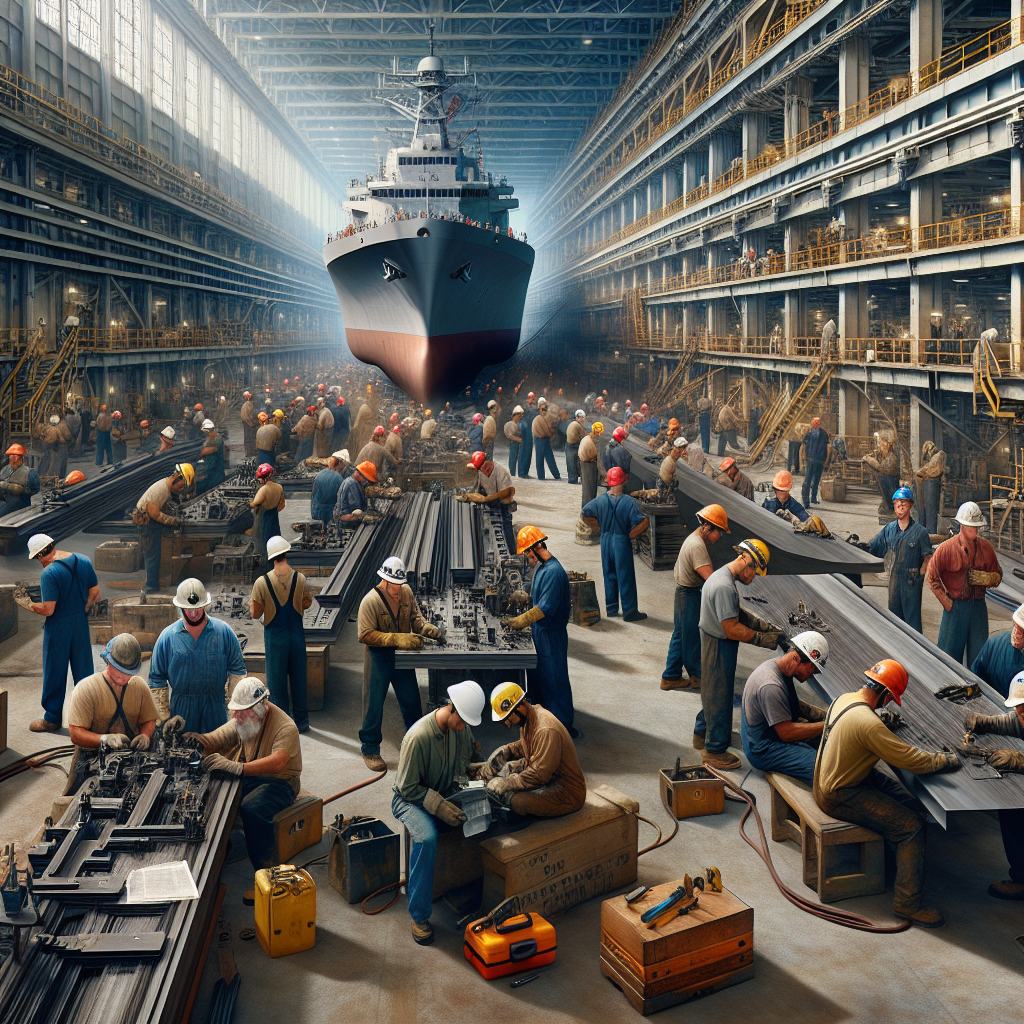
Addressing the Key Challenges of US Navy Shipbuilding: A Workforce-Centric Approach
The State of US Shipbuilding
The American shipbuilding sector is navigating through persistent hurdles, primarily regarding workforce issues. Naval affairs experts emphasize the importance of reforming this sector, commencing with improvements in workforce conditions.
US shipbuilding troubles have been brewing for decades, casting shadows over US Navy preparedness. Experts believe the crux of the problem lies in employee management aspects, including wages, working conditions, and retention strategies.
Challenges in the Shipbuilding Workforce
Naval industry experts argue that tackling shipbuilding challenges begins with offering competitive wages, enhancing the quality of life for workers, and strengthening retention measures.
During a recent House Armed Service Committee Seapower and Projection Forces subcommittee hearing, participants propelled the conversation forward on workforce-related issues hindering US shipbuilders. Some of these include a diminished industrial base and inconsistent demand signals from the Navy, affecting key Navy programs negatively.
- Competitive Wages: Compensation appears to be the primary concern. Many argue that the pay isn’t appealing enough, especially considering the demanding nature of shipbuilding jobs.
Current wages lead potential employees to pursue opportunities in retail and other sectors. - Improved Working Conditions: Enhancements to the quality of life, including better working environment and housing benefits, are pivotal. Implementing automation in shipyards and advancing worker training are also significant considerations.
- Retention of Skilled Workers: Not only should competitive pay attract new entrants to the field, but nurturing the careers of skilled workers remains critical.
Investments in Workforce as a Solution
Leading figures like Eric Labs, senior analyst for naval forces and weapons with the Congressional Budget Office, advocate for addressing labor shortages in shipbuilding sectors, such as welding and pipe fitting. Recruitment rates are low, and retention of skilled personnel is more challenging than ever.
Shelby Oakley from the Government Accountability Office emphasized the impacts of these workforce shortages. The lapses in skilled labor force impact shipyards’ ability to replace experienced workers, which is critical as the Navy’s strategic objectives depend heavily on a robust industrial workforce.
Consequences of Workforce Shortages
These issues are applicable to both blue-collar workers and positions involving design and engineering. White-collar professionals like naval architects and engineers are increasingly opting for opportunities outside the shipbuilding realm.
Oakley highlighted the inextricable connection between shipbuilding and maintenance. Both require focus, since they share similar labor-related issues.
International Competition and Implications
As the US contends with persistent shipbuilding challenges, China’s rapid shipbuilding expansion looms large. China presides over the world’s largest shipbuilding industry, outpacing the US by a considerable margin. The strategic focus in Washington has intensified in light of China’s rise.
Naval affairs experts emphasize that maintaining pace with China’s shipbuilding prowess is essential. Should tensions rise between the US and China on maritime fronts, the strategic importance of addressing US shipbuilding deficiencies would be evident.
Projected Shipbuilding Requirements and Current Constraints
The Congressional Budget Office anticipates hefty costs for sustaining and expanding the Navy fleet, with annual expenditures exceeding $40 billion through 2054 based on the Navy’s plans. Yet, GAO reveals that current infrastructure and workforce constraints across shipbuilders are ill-prepared to meet these ship delivery targets.
Steps Forward for US Shipbuilding
Some major initiatives include potential White House involvement, with conversations around establishing a dedicated office for handling shipbuilding challenges. There is broad support, from the executive branch to Navy leadership, to focus efforts on rejuvenating the shipbuilding industry.
The United States’ emphasis on modernizing its fleet and maintaining shipbuilding efficiency is critical to ensuring naval readiness against burgeoning global competitors. As discussions continue, strengthening and investing in the workforce remains the linchpin for overcoming endemic shipbuilding obstacles.
In conclusion, resolving these workforce challenges will be pivotal for enhancing US shipbuilding capabilities amidst rising global maritime competition. Addressing workforce issues through better wages, improved working conditions, and strategic industrial policies stands as a pathway toward realizing these objectives.
Source: https://www.businessinsider.com/fixing-us-shipbuilding-problems-starts-with-workers-2025-3

